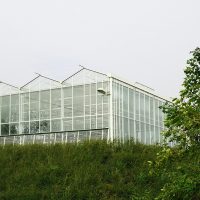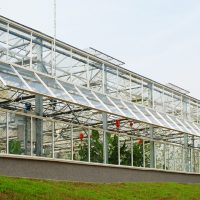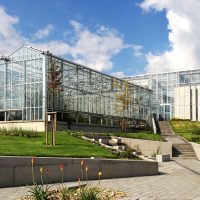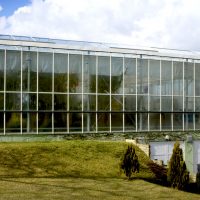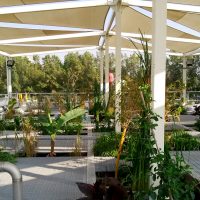To support development in areas rich in energy, such as natural gas (usually in smaller communities), local real estate markets have seen urgent demand for increased housing and associated infrastructure. For example, communities in North Dakota have seen dramatic growth through development of the Bakken Shale, with local communities and development companies taking on new projects to house several thousand people in a matter of months.

CHALLENGE
Consider a property developer taking on a project with 2,300 units on nearly 300 North Dakota acres. The project faces major challenges, as immediate attention is required to ensure all infrastructure is in place. Of course, the local wastewater facility was not designed for this growth, so it does not have the additional 350,000 gallons per day of capacity required to handle the increased demand. As such, finding an immediate solution for wastewater management becomes a crucial element of the development project.
OPTIONS
To solve this challenge, the developer sought to install their own local solution to treat wastewater from the new homes, providing the opportunity to produce over 125 million gallons of reclaimed water annually and generate over US$500,000 in revenue.
Initially the developer considered a membrane system, but this option immediately raised several social and financial concerns. Most importantly, the large “psychological footprint” due to the unappealing look (open sewage basins) and odor issues would negatively impact local property values and reduce the amount of land for development. In addition to the “psychological footprint” impacts raised by aesthetic and odor concerns, a membrane facility in this situation has physical land requirements of over 70,000m2 (including a surrounding buffer zone to address the aforementioned concerns).
From a financial perspective, membrane system operation and maintenance (including power and membrane replacement) costs are expected to reach US$106,000 per year (payable by homeowners), negatively impacting the development’s attractiveness for future residents. Also, in order to accommodate the odor and aesthetic concerns of the neighborhood, the facility would need to be enclosed at an additional cost, or placed at a distance, requiring large pumping and pipe networks to move the wastewater “away” from the community, further increasing infrastructure and power costs.
For these reasons, the developer considered a simple-to-construct and cost-efficient Organica-powered treatment solution, able to seamlessly integrate into the community.
ORGANICA BENEFITS
In contrast to the proposed Conventional solution, the Organica solution offers numerous advantages:
- Reduced operational costs
- Lower maintenance costs
- Increased land value
- Reduced infrastructure costs
THE ORGANICA SOLUTION
Reduced Operational and Maintenance Costs
Compared to the conventional membrane alternative, the Organica solution consumed over 50% less power, and also reduced sludge production by 20%, resulting in savings on power and sludge handling, as well as a lower carbon footprint. These combinations of factors translated into savings of US $11,000 per year.
Another significant recurring expense of a membrane facility are membrane replacement costs, due approximately every 5 to 7 years. With Organica’s solution, these replacements are not required, saving an additional US $15,000 per year.
Through these combined benefits, Organica was able to reduce the expected total operating expenditures by 25%, saving US$26,000 per year. As a result, the developer was able to present more attractive wastewater fees to homeowners while generating a return on investment.
Increased Land Value
Through utilizing the visually-appealing, odor-free, and compact Organica-powered solution, the treatment facility could be located within the community on just 1,600 m2 (drastically less than the 70,000 m2 mentioned previously for the alternative system), without detracting from the “feel” and value of the local neighborhood. This is in stark contrast to a conventional wastewater treatment facility, which has been shown in studies to decrease nearby property values by as much as 12%.
Lower Infrastructure Costs
Integrating the Organica facility inside the community, additional cost savings are realized on network infrastructure. Eliminating the need for new sewer lines and a pumping station to send wastewater to a remote treatment facility, the Organica solution reduced infrastructure costs by approximately US $300,000.
Assumptions: Net Present Value was calculated over a 20-year time frame, based on a discount rate of 10% and annual increases of 5% in wastewater rates, 3% in OPEX, and 1% in flow. Sewerage network costs are based on an elevation difference of 20m and pumping distance of 1,500m from an existing wastewater treatment plant.
Disclaimer: Financial estimates used are based on a theoretical greenfield project in North Dakota, USA. Images are sample displays. This case study is created for informational purposes only and should not be considered as a quote or offer of any kind. Financial data, OPEX, CAPEX, actual footprint, components (including but not limited to water reuse functionality), etc. may vary per project depending on the actual requirements.

